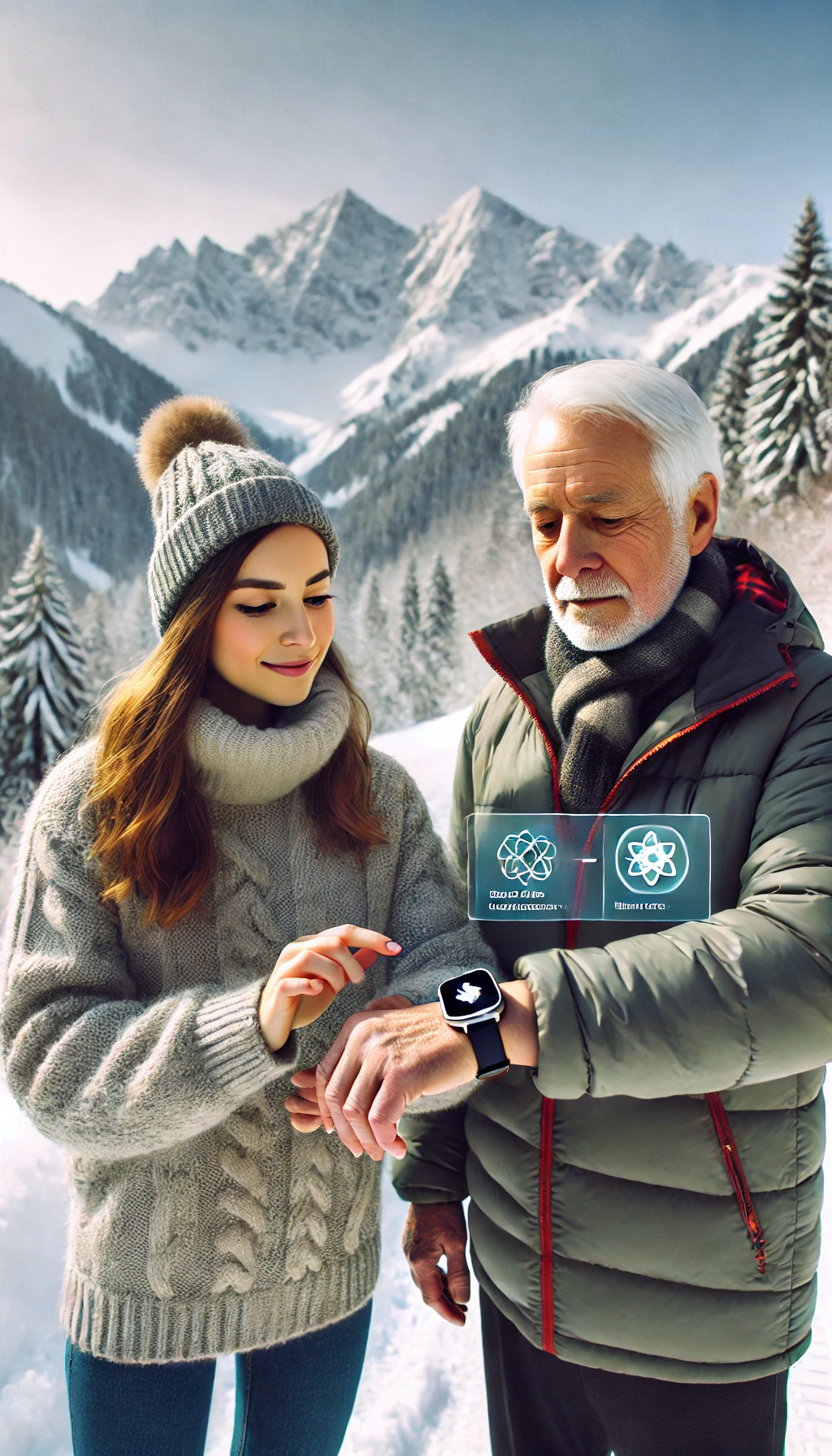
Sergio d'Arpa es un empresario y autor italiano, conocido por sus contribuciones a la medicina digital y predictiva. Es fundador y director general de Klinik Sankt Moritz AG, reconocida como la primera clínica totalmente digital del mundo.
Entre sus principales innovaciones, d'Arpa desarrolló el concepto de Gemelo Digital para la Salud, una representación virtual del paciente que integra datos de dispositivos vestibles, aplicaciones y pruebas moleculares. Esta tecnología permite la monitorización continua de la salud, avanzando en la medicina predictiva y la prevención de enfermedades.
También ha sido pionero en el concepto de Longevidad Aumentada, centrado en el uso de tecnologías avanzadas para prolongar y mejorar la calidad de vida. Integrando datos epigenéticos con análisis del estilo de vida, su trabajo pretende ofrecer soluciones personalizadas para promover la longevidad.
d'Arpa colabora en una columna sobre salud digital para Tiscali, donde explora temas como la inteligencia artificial, los dispositivos médicos innovadores y el impacto de la tecnología en la medicina moderna.
Su experiencia en supercomputación y automatización le ha llevado a desarrollar sistemas complejos capaces de procesar datos a gran escala, esenciales para implantar soluciones médicas predictivas y personalizadas.
En resumen, Sergio d'Arpa es una figura destacada de la innovación médica, comprometida con la transformación de la asistencia sanitaria a través de tecnologías digitales avanzadas, con especial atención a la mejora de la prevención y la mejora de la calidad de vida de los pacientes.
Soy un aspirante a padre, empresario, autor, conferenciante y experto en supercomputación. "Aspirante" porque sigo intentándolo, sin entender del todo cómo funciona, aunque sospecho que no soy el único.
https://innovazione.tiscali.it/rubriche/sergio-d-arpa/
https://www.linkedin.com/in/sergiodarpa
https://www.verduci.it/en/category/verduci-digital-twin-en/
[email protected]
Telegrama @sergiodarpa
+39 388 361 7433
Mi viaje para resolver problemas complejos y el camino hacia la longevidad
Siempre me he dedicado a abordar problemas complejos y desarrollar soluciones avanzadas en la web. Tomemos el ADSL, por ejemplo: a primera vista, puede parecer sencillo, pero la gestión de todas las actividades implicadas -entrega de última milla, coordinación de trabajadores, cumplimiento de la normativa y requisitos legales- lo hace increíblemente intrincado.
Imagínese el despliegue de ADSL en toda Europa, con cada país con su propia normativa de última milla. Esto significaba gestionar contratos, idiomas y estructuras de precios diferentes para cada mercado.
Siempre he sido responsable de sistemas a gran escala y de alta complejidad que requerían respuestas automatizadas a millones de peticiones similares al día. La manipulación manual era imposible, así que recurrí a la supercomputación para automatizar estos procesos. Lo que ahora llamamos inteligencia artificial (IA) era, en esencia, la automatización y la potencia de cálculo necesarias para satisfacer estas demandas. Por aquel entonces, no era "IA generativa" como la conocemos hoy, pero no dejaba de ser un procesamiento inteligente.
Por ejemplo, una vez desarrollé un motor de búsqueda para localizar a personas que vendían coches, basándome en la idea de que alguien que vendía un coche probablemente estaba buscando otro. El mercado ha evolucionado desde entonces: hoy en día, alguien que vende un coche puede comprar una bicicleta eléctrica o un patinete. Pero el principio de crear soluciones basadas en datos complejos sigue siendo el mismo.
A lo largo de mi carrera, siempre he buscado productos complejos e innovadores e investigación avanzada. Un día me trasladé a Saint Moritz y descubrí que tenía la tensión alta. A 2.000 metros sobre el nivel del mar, era peligroso. Mi mujer, que entonces era médico, estaba muy preocupada, aunque quizá hoy pensaría de otra manera.
Me advirtió de los riesgos. En un intento de solucionar el problema, mencioné casualmente que me descargaría una aplicación para controlar mi tensión arterial a distancia, pensando que sería una solución sencilla. Para mi sorpresa, no existía ninguna aplicación que pudiera realizar un seguimiento fiable e informar de mis parámetros de salud en tiempo real. Esto puso de manifiesto una importante laguna en la asistencia sanitaria, que aún persiste.
La brecha no sólo existe dentro de la sanidad, sino también entre campos especializados. Contamos con ingenieros y médicos altamente cualificados que trabajan en ámbitos muy verticales. Sin embargo, hay poca colaboración entre estos campos.
Esto da lugar a un enfoque aislado de la innovación, en el que cada solución se dirige a ámbitos limitados como la salud cardiovascular, la ortopedia o la dermatología. La medicina holística existe, pero rara vez profundiza lo suficiente como para integrar eficazmente las especialidades verticales.
Introducir una perspectiva "horizontal" en un mundo tan verticalizado es todo un reto. Paso horas formando a especialistas para que adopten una visión más amplia, con el objetivo de inculcar una mentalidad interdisciplinar.
Sin embargo, los equipos interdisciplinarios a menudo se limitan a alinear a los expertos uno al lado del otro, lo que supone un enfoque delegado para lograr una visión integrada, en lugar de una visión verdaderamente holística. Para lograr la longevidad y la atención integral del paciente, necesitamos una visión inherentemente horizontal, que no sea un mero mosaico de especialidades.
Esto es especialmente difícil en el campo de la medicina, donde se valora con razón la profundidad y el rigor. Los médicos, formados para profundizar en sus especialidades, tienen dificultades para abordar los problemas con la flexibilidad necesaria. No se trata de socavar la profundidad, sino de fomentar un grado de adaptabilidad que les permita ver el panorama general.
Mi objetivo, a pesar de no ser médico, es cultivar esta mentalidad. Es una misión difícil: guiar a profesionales cuya dedicación a la profundidad es profunda hacia una apertura a un pensamiento más amplio. Pero si queremos alcanzar una verdadera longevidad y salud preventiva, esta integración es esencial.
Alguien tiene que salvar esta brecha, y yo me comprometo a hacerlo. Sin un enfoque cohesionado e interdisciplinar, corremos el riesgo de perder la visión de conjunto necesaria para hacer avanzar la asistencia sanitaria y promover la longevidad de forma significativa.

